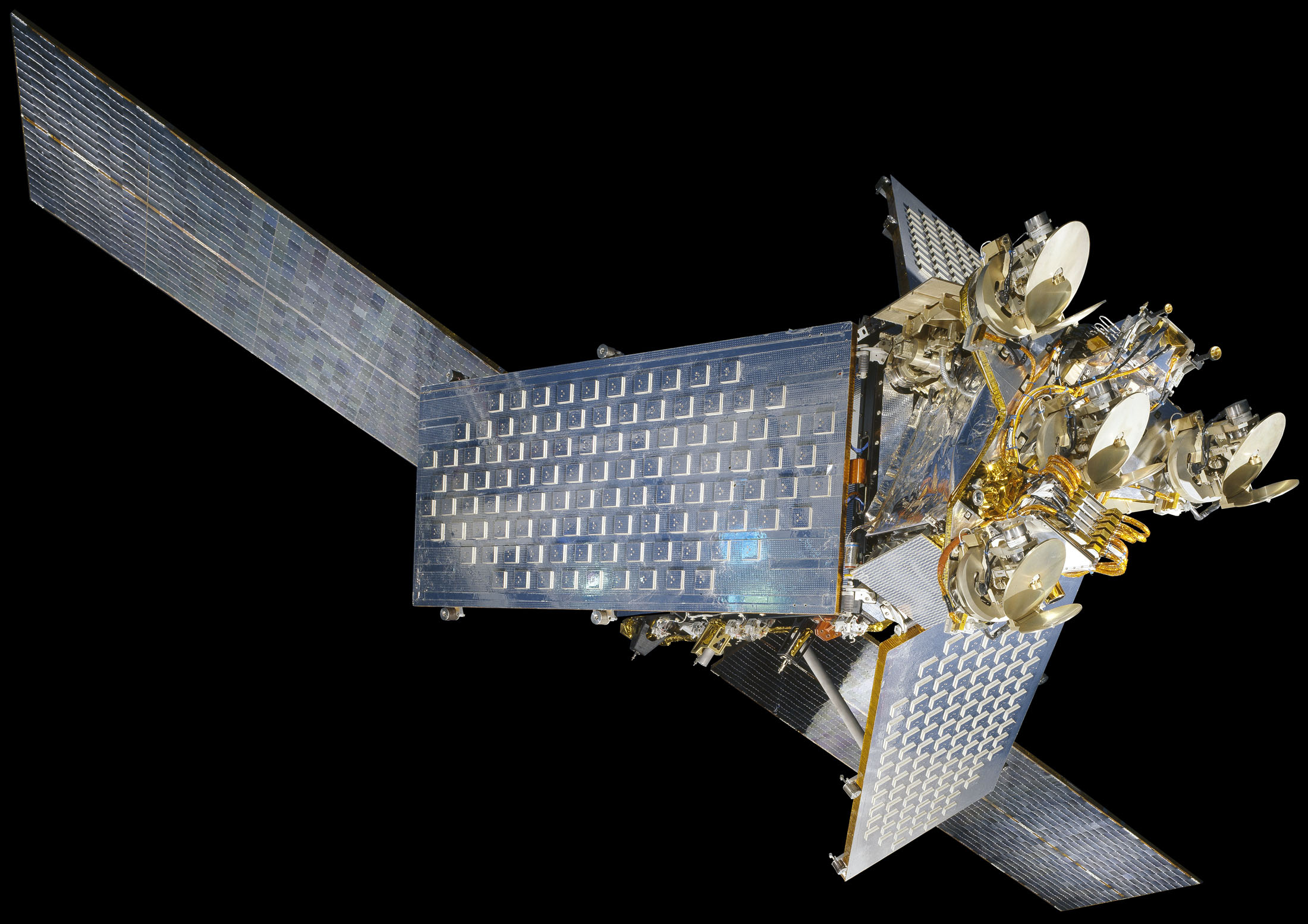
The launch of the first batch of new-generation Iridium communications satellites Saturday will mark the beginning of the end for the predictable, spectacular flares of reflected sunlight produced by the old-design craft, a favorite of amateur skywatchers for nearly two decades.
Iridium flares have dazzled in the evening and morning skies since the first satellites in the fleet launched in 1997.
Satellite passes are visible when an object flying overhead is still illuminated by the sun, and when the sun is below the horizon on the ground. Occasionally, a spacecraft will brighten when sunlight bounces off a reflective surface, like a solar array or antenna.
Unlike other objects in orbit around Earth, flares from Iridium’s Lockheed Martin-built relay craft are highly predictable — to the second — giving observers advance notice of when and where to look.
The first-generation Iridium satellites have three antenna panels mounted at an angle to the craft’s main body. Each one is highly reflective and treated with silver-coated Teflon.
When the sun strikes one of the antennas just right, a flare is visible from the ground. An observer positioned in the right place at the right time will see a sudden brightening of the satellite as it soars across the sky.

The flares sometimes get as bright as -8 magnitude, brighter than the crescent moon, and last up to 20 seconds. The most brilliant flares can even be seen in daylight.
The long axis of the first-generation satellites always points directly to Earth at an altitude of 485 miles (780 kilometers). Savvy observers can calculate when the flares will occur and where to look by knowing the location of the spacecraft and the sun.
If math isn’t your thing, you can look up flares for your location at Heavens-Above.com by entering your observing site, and clicking on Iridium flares.
The flares are a design fluke, and Iridium’s new generation of communications satellites will not produce the phenomena.
There are normally 66 operational satellites in the Iridium fleet spread uniformly around the globe in six orbital lanes. The company’s satellites launched from 1997 through 2002, and were originally designed to function for just eight years.
Iridium says 64 members of the 66-satellite constellation are still active, relaying messages, voice calls and data around the world through inter-satellite links and ground stations for the company’s nearly 850,000 subscribers.
With an aging network, Iridium is about to launch the first batch of “Iridium Next” satellites as soon as Saturday to upgrade and replenish the fleet.
A SpaceX Falcon 9 rocket will carry 10 of the satellites, which use a single antenna and are of an entirely new design, into orbit from Vandenberg Air Force Base in California.
“Due to design improvements, our new satellites unfortunately are not expected to create flares, so enjoy Iridium flares while you can,” Iridium says on its website. “The new antennas offer increased data speed and capacity but are angled differently than the current design, and are therefore not likely to reflect much sunlight.”
The new satellites will replace the existing members of Iridium’s network one-by-one.
Once a fresh satellite is turned on and confirmed healthy, the old satellite will be removed from the fleet. In most cases, the retired craft will be de-orbited to burn up in Earth’s atmosphere, assuming it has enough leftover fuel for the maneuvers.
The $3 billion replacement program should be complete by mid-2018, when Iridium flares will be a thing of the past.
Quelle: SN
